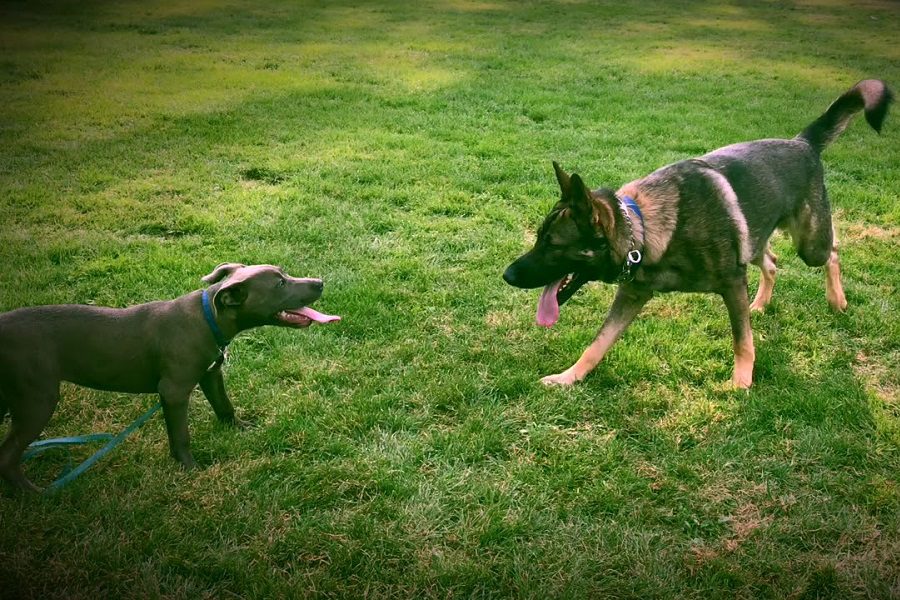Last Updated: 4 months ago
Dogs need a lot of exercise, and if you’ve ever owned one, you know how rambunctious they can be if they don’t get their daily walk. They tear things up, bark at nothing, and are so obviously bored that they show it by acting out.
We know that dogs need this daily exercise, but sometimes it’s not always possible to get them out of the house and walking around the neighborhood. Enter the dog treadmill, a revolutionary way to let dogs get exercise when all other means just aren’t possible.
Thinking of a dog walking on a treadmill might sound like something out of a science fiction movie or a thing that incredibly wealthy people own, but they’re actually legitimate accessories. Just like a human treadmill, these devices let your dog get their daily exercise without having to venture outside, and for some dogs out there, it could be just what they need.
What Is A Dog Treadmill?
A dog treadmill is exactly what it sounds like—an exercise device for your dog. A human treadmill is a stationary machine with a running desk that moves continuously and allows you to walk or run on it without ever leaving your house, and that’s exactly what a dog treadmill does as well.
These devices are made for dogs who, for one reason or another, can’t get outside and go for a walk. They’re designed to be small enough to fit dogs, with some made for large breeds as well, and have features that make them perfect for canines.
The running deck is just like a human treadmill and has enough space on the sides and in length to suit your dog. They come in different sizes, and some even have additional functions and settings that can be adjusted to suit.
Types Of Dog Treadmills
The dog treadmill market is still in its early stages, but already there are so many types out there to choose from. Depending on the size of your dog and their physical needs, there’s likely to be a perfect fit out there for you both.
- Small dog treadmills: These are ideal for smaller breeds of up to 30 pounds and are a lot smaller and usually cheaper than the larger devices.
- Large dog treadmill: A large dog treadmill is suited to animals over 150 pounds, which could be for overweight dogs or for larger breeds.
- Extra-large dog treadmills: These usually refer to treadmills with a capacity of over 225 pounds for dogs that are very overweight or of larger breeds. They come with additional railing and support to meet their unique physical needs.
Which Dogs Would Benefit Most?
All dogs need daily exercise, but for some, it’s just not feasible to go for a walk around the neighborhood. These are some of the dogs that might benefit more from a treadmill than others:
- Overweight dogs: Sometimes it’s uncomfortable or unsafe for an overweight dog to leave the house, so having a treadmill lets them work out a little bit at a time without overdoing it.
- Dogs with a disability or injury: If your dog has had recent surgery, an injury, or a condition that is painful on their joints, a treadmill could allow them to exercise each day without doing anything too strenuous.
- Dogs with busy owners: Sometimes the owner’s schedule is what makes it hard to walk their dog, like if they work during hours when a dog would normally exercise. This means that even if you miss a day, you can still get them active once you’re home.
- Dogs who live in bad weather climates If you live somewhere where it’s incredibly hot or there are harsh conditions like snow, having a treadmill ready at home will ensure they don’t miss out on exercise because they can do it indoors.
- Dogs with lots of energy: There are some dog breeds that require more than just one walk a day, and if you don’t have the time or energy to do it, then a treadmill could be your saviour.
How Do They Differ from Human Treadmills?
If you’ve ever thought of putting your dog on a treadmill before, you’re probably wondering why you can’t just use your own treadmill for them. There are a few key differences that mean a regular treadmill isn’t suitable for dogs, and it should never be attempted.
- Speed: A dog will usually find the slowest speed on a human treadmill to be too fast, so they need something a lot slower.
- Length: The length that a dog requires is longer than that of a human, and this is due to their gait. They stretch out a lot further than us and simply wouldn’t have room to walk or run.
- Width: The width of a dog treadmill must also be bigger to give the canine room to float and not restrict their body movement.
- Motor Casing: Human treadmills have a fan that blows air as you walk or run, but for dogs, this means hair and fur can get caught in it. The motor is usually housed somewhere else and cased in something protective.
- Rails and support: There may be cover on the sides to keep your dog safe, and things like a cap on the front and end will be removed because they can become stuck in them.
A Smart Investment For The Right Kind Of Dog
If your dog meets any of the above criteria for needing a treadmill, it’s a worthy investment that you should consider. No longer seen as something futuristic or unnecessary, there are so many great benefits on offer from getting on for your dog.
Whether your four-legged friend is physically incapable of going for a walk outside or you work long hours, there’s no need to deprive them of their exercise. A dog treadmill is specially made to suit their needs and will keep them healthy when they otherwise couldn’t be.



